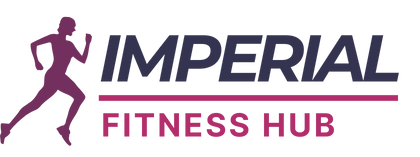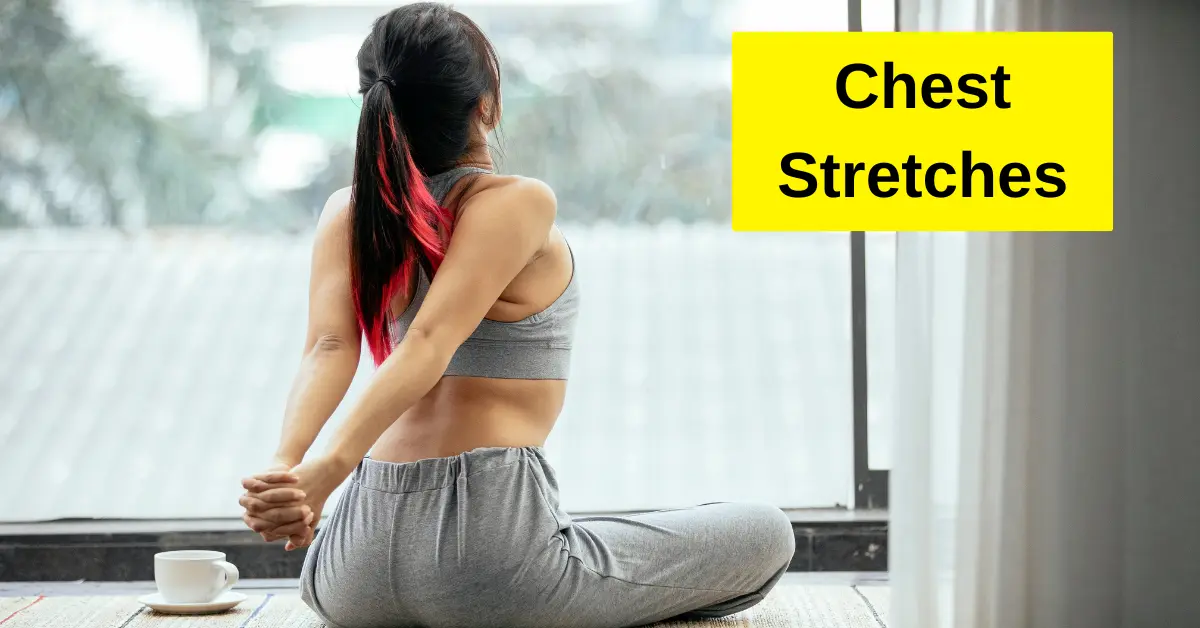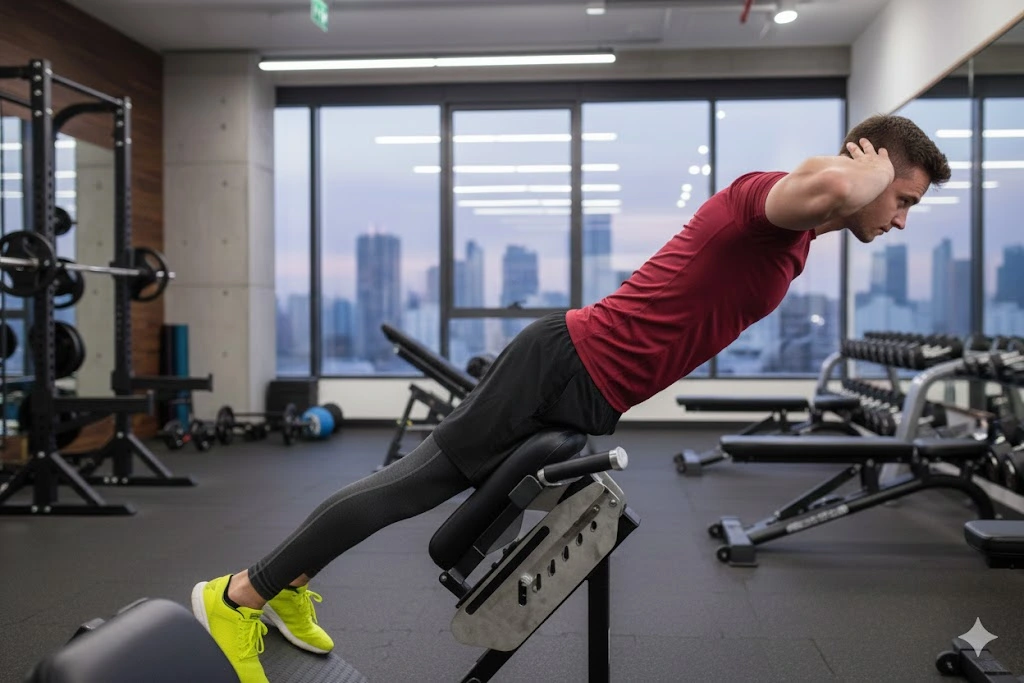Introduction
Tightness in the chest is one of the most common problems in today’s modern lifestyle. Whether you spend long hours hunched over a laptop, lifting heavy weights in the gym, or recovering from a strained muscle, your chest muscles can easily become shortened and stiff. This doesn’t just limit flexibility, it affects posture, shoulder mobility, and even breathing.
Chest stretches are more than just a “feel-good” movement. They play a key role in unlocking range of motion, improving posture, and supporting overall upper body health. As Dr. Karen Jameson, a physiotherapist specializing in sports rehabilitation, explains:
“The pectoral muscles influence so many movements of the upper body. When they are tight, the shoulders roll forward, breathing becomes shallow, and the risk of shoulder and back injuries increases. Stretching these muscles consistently helps restore balance and prevents long-term issues.”
“According to Harvard Health, stretching plays a vital role in posture, mobility, and injury prevention.”
This guide is designed to give you every angle of chest stretches: from beginner-friendly moves and posture corrections, to advanced mobility drills used by athletes, and gentle options for injury rehab. By the end, you’ll have a comprehensive toolbox of techniques to maintain a flexible, strong, and pain-free chest.
Table of Contents
Why Your Chest Feels Tight (And How Stretches Help)
The chest is made up primarily of two muscles: the pectoralis major (the large fan-shaped muscle covering most of your chest) and the pectoralis minor (a smaller, deeper muscle that connects to the ribs and shoulder blade). Together, they help with pushing, lifting, and stabilizing the shoulders.
When these muscles become shortened or overloaded, they pull the shoulders forward and restrict movement. This is what creates that “tight” feeling across your chest.
Common Causes of Chest Tightness
- Desk posture: Hours of slouching forward at a computer or looking down at a phone shortens the pecs and weakens the upper back.
- Heavy workouts: Exercises like bench press and push-ups strengthen the chest, but without stretching, the muscles remain shortened.
- Stress and shallow breathing: Emotional tension often leads to rounded shoulders and tightness in the front of the body.
- Sports movements: Swimming, tennis, baseball, and volleyball all involve repetitive forward motions that shorten the chest.
- Injury and strain: A pectoral strain or overuse injury creates scar tissue, which limits flexibility until stretched and rehabilitated.
How Stretches Help
Stretching reverses these problems by:
- Lengthening the pec muscles, allowing the shoulders to sit back naturally.
- Restoring balance between the chest and back muscles reduces the risk of upper cross syndrome.
- Improving posture makes it easier to stand tall with an open chest.
- Relieving pressure on the neck and shoulders, reducing tension headaches, and back pain.
- Supporting recovery after workouts or injury by improving blood flow and mobility.
As Mark Reynolds, strength coach and mobility specialist, points out:
“Most people train their chest far more than they stretch it. That imbalance is one of the fastest ways to develop rounded shoulders, shoulder pain, and even nerve compression. Just 5 minutes of chest stretching daily can undo hours of tightness.”
In short, chest tightness is not just about discomfort it affects posture, performance, and overall health. The good news is, the right stretches can make a dramatic difference within days.
Benefits of Chest Stretches
Chest stretches do more than loosen tight muscles, they improve posture, mobility, performance, and even breathing.
- Posture Correction: Tight pecs pull the shoulders forward, causing slouching and neck pain. Stretching reopens the chest and helps maintain an upright, healthy posture.
- Better Shoulder Mobility: Freeing the chest muscles allows the shoulder blades to move properly, making overhead lifts, daily reaching, and sports movements smoother.
- Boosted Performance: Flexible pecs improve range of motion in push-ups, bench presses, and athletic strokes, while lowering injury risk.
- Faster Recovery: Stretching after training improves circulation, prevents lingering tightness, and supports injury rehab.
- Stress Relief & Breathing: Opening the chest restores rib expansion for deeper breaths, easing stress and boosting energy.
When & How to Stretch Your Chest
Stretching your chest isn’t just about what movements you do, it’s also about when and how you perform them. The timing, technique, and intensity of a stretch can make the difference between improving mobility and aggravating tightness.
1. Static vs. Dynamic Stretching
- Static Stretching: This is when you hold a stretch in one position, usually for 15–30 seconds. It’s best for cooling down after a workout or as part of a daily posture routine. Static stretches allow the chest muscles to gradually lengthen and relax.
- Dynamic Stretching: These involve controlled, moving stretches like arm swings or foam roller openers. They are ideal before a workout because they increase blood flow, warm up the tissues, and prepare the muscles for explosive or strength-based movements.
As Dr. Jason Clarke, physiotherapist and mobility coach, explains:
“Static stretches are great for flexibility, but dynamic stretches prepare the nervous system. If you’re heading into a workout, choose dynamic stretches first. If you’re unwinding at the end of the day, stick with static.”
2. Warm-Up vs. Cool-Down
- Warm-Up Chest Stretches: These should be dynamic and movement-based—think arm sweeps, foam roller extensions, or banded openers. They activate the shoulders and thoracic spine, reducing the risk of injury during pressing or overhead lifts.
- Cool-Down Chest Stretches: After training, the goal is recovery. Static holds like the doorway stretch, chest opener, or child’s pose help reset posture, release tension, and restore muscle length.
3. Injury Precautions
Stretching is not always appropriate if you are dealing with an acute injury.
- If you have recently suffered a pectoralis strain or tear, aggressive stretching can worsen the damage.
- Instead, early treatment should focus on rest, ice, and gradual rehabilitation under the guidance of a physiotherapist.
- Once cleared, gentle chest stretches, like child’s pose or clasped-hands opener—can be reintroduced.
A good rule of thumb: stretches should feel “comfortably uncomfortable,” never painful. Tingling, numbness, or sharp pain are signs you should stop immediately.
As Coach Laura Medina, corrective exercise specialist, puts it:
“The chest is connected to the shoulders, neck, and spine. If you stretch too aggressively, you’re not just risking muscle strain—you can irritate nerves. Always ease in and listen to your body.”
15 Best Chest Stretches (Step-by-Step Guide)
Below is a complete library of chest stretches ranging from beginner-friendly to advanced. Choose the ones that match your goals—whether it’s posture correction, injury rehab, or gym performance.
1. Doorway Chest Stretch (90° Bent-Arm)
This stretch is a physiotherapist’s favorite because it opens the chest while keeping the shoulders stable. It is perfect for posture correction and desk workers.
How to Do It:
- Stand in a doorway with your elbows bent at 90°.
- Place both forearms against the frame at shoulder height.
- Step one foot forward and gently lean in until you feel a stretch across your chest.
- Hold for 20–30 seconds, then switch feet.
2. Doorway Chest Stretch (Straight-Arm Variation)
A variation of the doorway stretch that targets deeper fibers of the pectoralis minor. It creates more openness across the chest wall.
How to Do It:
- Stand in the doorway with arms extended straight out at shoulder height.
- Place your palms on the frame.
- Step forward slowly until you feel a stretch in your chest.
- Hold for 20–30 seconds, repeat 2–3 times.
3. Wall Chest Stretch
This simple wall-based stretch works one side of the chest at a time, making it easy to control intensity.
How to Do It:
- Stand sideways next to a wall.
- Place one palm flat on the wall at shoulder height with your arm straight.
- Slowly rotate your body away from the wall until the chest opens.
- Hold for 15–20 seconds, repeat on the other side.
4. Chest Opener (Hands Clasped Behind Back)
One of the most classic stretches, this move opens the chest while strengthening your upper back engagement.
How to Do It:
- Stand tall with your feet hip-width apart.
- Clasp your hands behind your back with palms facing in.
- Squeeze shoulder blades together and gently lift your arms away from your back.
- Hold 20–30 seconds, breathing deeply.
5. Walk-Up-the-Wall Stretch
This progressive stretch lets you adjust intensity by “walking” your hand up a wall. It’s excellent for gentle mobility work.
How to Do It:
- Stand facing a wall and place one palm flat at shoulder height.
- Slowly walk your hand upward as far as comfortable.
- Step closer if needed and pause when you feel the chest stretching.
- Hold 15–30 seconds, repeat on the other side.
6. Floor Chest Stretch (Arm Bar Stretch)
This stretch targets the chest and front shoulder while also improving spinal rotation. It is often used in rehab to restore mobility.
How to Do It:
- Lie flat on your stomach with one arm extended straight out at shoulder height.
- Place the opposite hand on the floor near your chest for support.
- Gently roll your body away from the extended arm until you feel a stretch.
- Hold 20–30 seconds, then switch sides.
7. Foam Roller Chest Stretch
A great stretch for office workers, this opens the chest passively while correcting rounded shoulders.
How to Do It:
- Lie lengthwise on a foam roller so your head, spine, and hips are supported.
- Bend your knees with feet flat on the floor for balance.
- Let your arms fall open to the sides with palms facing upward.
- Stay in this position for 30–60 seconds, breathing deeply.
8. Foam Roller Snow Angels
This dynamic stretch builds shoulder mobility while gently opening the chest. It works especially well after a workout.
How to Do It:
- Lie lengthwise on a foam roller with head, spine, and hips supported.
- Start with arms at your sides, palms up.
- Slowly sweep your arms overhead as if making a snow angel.
- Return arms down, keeping them heavy and relaxed.
- Repeat 6–8 times.
9. Foam Roller T-Spine Extension
This stretch improves thoracic spine extension while lengthening the chest, perfect for people who sit a lot.
How to Do It:
- Place a foam roller horizontally under your shoulder blades.
- Support your head with your hands, elbows wide.
- Slowly lean your upper back over the roller, pausing when you feel a stretch.
- Return to starting position and repeat 5–6 times.
- Let your arms fall open to the sides with palms facing upward.
- Stay in this position for 30–60 seconds, breathing deeply.
10. Elbow Butterflies
This active stretch mobilizes the chest while improving posture and shoulder control. It is gentle but effective for loosening tight pecs.
How to Do It:
- Sit or stand tall and place your hands lightly behind your head.
- Pull your elbows back until you feel a stretch across your chest.
- Slowly bring elbows slightly forward to release the stretch.
- Repeat 8–12 reps, holding the last one for 10 seconds if desired.
11. Towel Stretch (or Strap Stretch)
Ideal if clasping hands is difficult, this stretch opens the chest and shoulders using a towel or strap.
How to Do It:
- Stand tall holding a towel or strap behind your back with both hands.
- Keep arms straight and gently lift the towel away from your body.
- Raise until you feel a comfortable stretch in the chest.
- Hold 15–20 seconds, repeat 2–3 times.
12. 90-90 Arm Sweep
A mobility drill that stretches the chest while improving thoracic rotation. Great for athletes and lifters.
How to Do It:
- Lie on your side with bottom leg straight and top leg bent at 90°, resting on the floor.
- Extend both arms in front of you at shoulder height.
- Sweep your top arm across your body in an arc, trying to touch the floor behind you.
- Return slowly to the start and repeat 6–8 reps each side.
13. Reach & Rotate Opener
This dynamic move stretches the chest and trains rotational control through the upper back.
How to Do It:
- Start in a kneeling position with one hand on the floor for support.
- Place your other hand behind your head, elbow bent.
- Rotate your torso outward, bringing the elbow up toward the ceiling.
- Slowly return to start and repeat 8–10 times per side.
14. Floor Slide
Often called the “wall slide on the floor,” this stretch increases shoulder mobility while lengthening the pecs.
How to Do It:
- Lie on your back with knees bent and arms in a goalpost position.
- Keep elbows and wrists flat on the ground.
- Slowly slide your arms overhead, then return to starting position.
- Perform 8–12 slow reps.
15. Prone Floor Angel
This variation builds chest mobility while engaging the back muscles for better posture support.
How to Do It:
- Lie face down with arms bent at 90° beside your head.
- Lift your chest, arms, and head slightly off the floor.
- Extend your arms overhead, then bring them back to the goalpost position.
- Repeat 6–8 times with control.
Muscles Worked in Chest Stretches
- Pectoralis Major: The big fan-shaped chest muscle; tightness pulls shoulders forward and limits mobility.
- Pectoralis Minor: Smaller, deeper muscle under the pec major; linked to rounded shoulders and posture issues.
- Anterior Deltoid: Front shoulder muscle; often stretched along with the chest.
- Biceps Brachii: Arm muscle crossing the shoulder joint; lengthened in wall and side-lying chest stretches.
- Rhomboids & Trapezius: Upper back muscles; benefit indirectly when chest flexibility allows better shoulder blade control.
- Serratus Anterior: Stabilizes the shoulder blade; functions better when pecs are lengthened.
Chest Stretches for Different Needs
Not everyone stretches for the same reason. Some want to fix posture, others prepare for lifting, and some are recovering from injury. Here’s how to tailor chest stretches to your specific needs:
1. For Desk Workers
Long hours at a computer tighten the chest and weaken the back. These stretches help reverse that “hunched” position:
- Foam Roller Chest Stretch – lie lengthwise and let arms fall open.
- Chest Opener (Hands Clasped Behind Back) – squeeze shoulder blades together and lift.
- Walk-Up-the-Wall Stretch – progressively open the chest at your own pace.
Tip: Do these every 2–3 hours at work to reset posture.
2. For Gym Lifters
Heavy benching and push workouts shorten the pecs. Pre- and post-lifting stretches improve performance and recovery:
- Before Workout (Dynamic): 90-90 Arm Sweep, Reach & Rotate Opener, Plyo Pushups.
- After Workout (Static): Doorway Chest Stretch, Floor Slide, Foam Roller Snow Angels.
Expert note – Coach Ryan Keller:
“Dynamic stretches before lifting keep the muscles active and ready, while static stretches after lifting restore length and reduce tightness.”
3. For Injury Rehab
If you’ve had a pectoral strain or shoulder injury, gentle stretches under guidance are safest:
- Child’s Pose – mild, safe opening of the chest wall.
- Floor Chest Stretch (Arm Bar Stretch) – controlled, one side at a time.
- Doorway Stretch (light version) – only when cleared by a physiotherapist.
4. For Posture Correction
When rounded shoulders or “tech neck” is the problem, these stretches realign the chest and upper back:
- Extended Child’s Pose on Fingertips – lengthens chest and shoulders deeply.
- Side-Lying Parallel Arm Stretch – isolates one side of the chest and shoulder.
- Towel Stretch – helps those with poor flexibility open up gradually.
Common Mistakes to Avoid
Even simple chest stretches can go wrong if done carelessly. Watch out for these common errors:
- Overstretching into pain – A chest stretch should feel like gentle tension, not sharp or burning pain.
- Arching the lower back – Many people lean their spine instead of stretching their chest. Keep your core engaged.
- Bouncing during stretches – Jerky, bouncing movements can strain the muscle instead of lengthening it.
- Ignoring warning signs – Tingling in the fingers or numbness means a nerve may be compressed; ease off immediately.
- Holding your breath – Always breathe deeply and steadily to allow the muscles to release.
- Skipping balance work – Stretching without strengthening the upper back leaves posture issues unresolved.
Expert note – Dr. Samuel Price, sports therapist:
“Most stretching injuries come from people forcing the position or rushing. Slow, steady, and consistent practice works far better than pushing your body past its limit.”
Safety & Rehab Notes
Chest stretches can be powerful tools for recovery, but they’re not always safe in every situation. Here are key safety guidelines:
- Avoid stretching during the acute phase of injury. If you’ve just strained or torn a chest muscle, stretching too soon can worsen the damage. Start with rest, ice, and medical evaluation.
- Ease in gradually after injury. Once cleared by a physiotherapist, begin with gentle stretches like Child’s Pose or a light Doorway Stretch before moving into deeper variations.
- Never push into sharp pain. A stretch should feel like tension or mild discomfort—not stabbing or burning pain.
- Respect red flags. If you feel chest tightness accompanied by shortness of breath, dizziness, or heart-related symptoms, stop immediately and seek medical help.
- Consider underlying conditions. Issues such as costochondritis, shoulder impingement, or upper cross syndrome require modified or supervised stretching.
- Balance stretching with strengthening. Opening the chest is only half the solution; pairing stretches with upper back and shoulder blade exercises creates long-term stability.
Expert note – Dr. Hannah Lee, orthopedic physiotherapist:
“After a pec strain, people are eager to stretch because it feels tight, but too much too early can set healing back. The safest approach is to restore movement in stages, progressing from gentle openers to deeper stretches under professional guidance.”
FAQs About Chest Stretches
Q1. Why does my chest crack or pop when I stretch?
That sound usually comes from joints or connective tissue adjusting position. As long as it’s painless, it’s typically harmless. But if popping is painful or frequent, consult a physiotherapist.
Q2. How long should I hold a chest stretch?
Static stretches work best when held 20–40 seconds. Shorter holds help mobility, while longer ones (up to 60 seconds) are ideal for tightness relief.
Q3. Should I stretch my chest before or after a workout?
Before lifting: Use dynamic stretches (like arm sweeps or band openers).
After lifting: Use static stretches (like doorway or floor stretches) to cool down and release tension.
Q4. Can stretching fix rounded shoulders?
Yes, when paired with upper back strengthening. Chest stretches open the front body, while back exercises pull the shoulders into alignment.
Q5. Is it safe to stretch my chest every day?
Yes, daily stretching is generally safe if you stay gentle. For deep or advanced stretches, 3–4 times per week is usually enough.
Q6. What’s the best stretch if I work at a desk all day?
Try the Doorway Stretch or Foam Roller Chest Opener. They directly target the forward-rounded posture caused by sitting.
Q7. Can chest stretches help with breathing?
Absolutely. Tight pecs can restrict rib cage expansion. Opening the chest allows for deeper, fuller breaths.
Q8. Are chest stretches safe after an injury?
Only under professional guidance. Start light (Child’s Pose, floor variations) and progress gradually. Never force a stretch on a strained pec.
Conclusion & Takeaways
Chest stretches are more than just an add-on to your workout—they’re essential for better posture, stronger performance, and long-term joint health. Whether you’re lifting heavy in the gym, sitting all day at a desk, or recovering from an injury, opening up the chest muscles helps you move, breathe, and live better.
Here’s what to remember:
- Stretch smart, not hard. Gentle, consistent practice beats forcing deep stretches.
- Use the right stretch at the right time. Dynamic before workouts, static afterward, and gentle daily openers for posture.
- Balance with strengthening. Chest stretches paired with back and shoulder exercises give lasting posture correction.
- Listen to your body. Pain, tingling, or sharp discomfort means stop and reassess.
As physiotherapist Dr. Hannah Lee puts it:
“Flexibility is freedom. When the chest opens up, your shoulders align, your breath deepens, and your body feels lighter. The difference isn’t just physical—it’s how you carry yourself every day.”
So next time you feel tightness across your chest, don’t ignore it. A few minutes of focused stretching can change how you perform in the gym, how you feel at your desk, and how you recover after long days.
Start with two or three stretches from this guide today. Build them into your routine, and over time, you’ll notice your posture, breathing, and movement transform.






One Response
Thanks so much for giving everyone an extraordinarily brilliant chance to discover important secrets from here. It really is so lovely plus jam-packed with a good time for me personally and my office acquaintances to visit your website not less than thrice in one week to read through the newest stuff you have got. And of course, I am also always pleased with all the good techniques you give. Some 1 points in this post are undoubtedly the most impressive we’ve ever had.